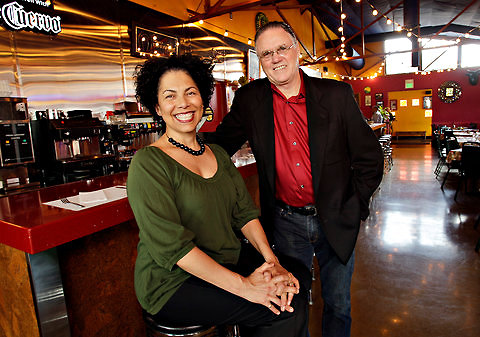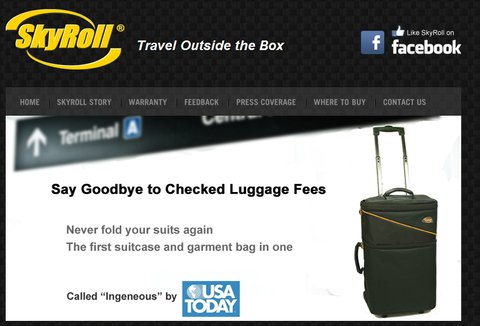 Jeffrey D. Allred for The New York Times Lucy Cardenas and Bill Coker made the unconventional decision to build a second location right next to their first.
Jeffrey D. Allred for The New York Times Lucy Cardenas and Bill Coker made the unconventional decision to build a second location right next to their first.
Case Study
What would you do with this business?
A year ago, we told you about a dilemma facing Red Iguana, a family-owned Mexican restaurant in Salt Lake City. Its owners, Lucy Cardenas and Bill Coker, were facing a two-pronged problem with their first location. First, a happy problem: their restaurant had gotten so popular after appearing on the Food Network’s “Diners, Drive-ins and Dives” that customers regularly had to wait an hour to be seated. At the same time, the city was about to build a light rail line down the middle of the restaurant’s street, a project that had the potential to force the business to close for several weeks.
To ease the customer wait and protect themselves from downtime, there was little doubt that Red Iguana’s owners needed a second location. But the way they decided to expand was somewhat surprising. Ms. Cardenas and Mr. Coker decided to open a second location with the same name and menu just two blocks from their first, a plan that went against conventional wisdom and was rejected by most of the experts we consulted at the time of our original article.
But the strategy quickly found success. During its first full year, 2010, the new restaurant had revenue of $2.1 million. Still, that was only a little more than half of the original restaurant’s annual take of $3.9 million, which itself was down from $4.2 million in 2009. So, would the new location be able to build on its early success (without cannibalizing the original business)? And what would happen when the construction project shut down the first location?
We recently checked in with Mr. Coker, and the new location seems to have built on its strong start. The original location is on track to bring in $4.2 million during 2012, he said, which would match its income from the height of its popularity in 2009 (when it was the only restaurant). And the new location should pull in about $3.2 million, he said.
“What we’ve seen is that there are a substantial number of our clientele who prefer location No. 2 to No. 1 because when the patio is open, there are more seats, and we have a counter and indoor waiting area and valet parking in the evenings,” Mr. Coker said. “It’s more spacious and quieter than the original, and some people prefer that atmosphere. Others prefer the original. It’s actually turned out to be to our advantage that it’s not a cookie-cutter of the original; we’re able to accommodate two different types of clients. Also in terms of operational ease, it’s a tremendous advantage to our kitchen managers to be able to stabilize food flow by running two blocks to the other restaurant.”
Almost as important, the second location saved the company from what could have been major economic damage caused by construction of the rail line. As a member of a community board advising the city on the construction, Mr. Coker negotiated a deal whereby the street in front of the original Red Iguana would be rebuilt last, so that the construction company could concentrate all of its efforts on the site — thereby turning a three-to-five week job into a weeklong project.
And then, to best use the week during which the original restaurant would be closed, Ms. Cardenas and Mr. Coker — after employing announcement cards, banners, Facebook and Twitter to point their customers to the new restaurant — laid out a seven-day plan to renovate the original location using restaurant workers as labor.
At 9 p.m. on July 8, when the original location turned on its “closed” sign, the city began tearing up the street, and Red Iguana’s staff started dismantling their restaurant. Directed by paid trade contractors, a third of the staff from the original location (including a professional painter and plumber) took part in a $250,000 renovation. Working 24 hours a day, alternating crews of from 30 to 50 people moved the restaurant’s furnishings outside into a circus tent set up for the occasion; laid an epoxy floor; installed $25,000 of stainless steel equipment in the kitchen; and repaved the parking lot.
“Normally I don’t think a restaurant could pull off a $250,000 renovation in seven days, but that’s the kind of experience I have from the entertainment business, coordinating multiple crews simultaneously,” said Mr. Coker, who in the early 1980s had worked as an assistant director and production manager on a series of Burt Reynolds buddy comedies, including “The Cannonball Run.”
At the new restaurant, the owners added 28 outdoor seats, increased staff with another third of the employees from the first location (the final third took vacation), and began offering valet parking at lunch and dinner every day.
And on Monday July 16, one week after it closed, the original location reopened. According to Mr. Coker, even without the seven days of income, the first location took in $282,000 in July, barely $300 less than in July 2011.
Article source: http://boss.blogs.nytimes.com/2012/08/28/a-restaurant-makes-the-most-of-being-forced-to-close/?partner=rss&emc=rss


